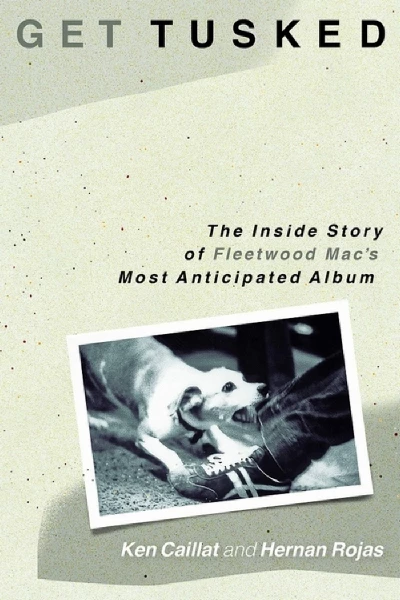published: 9 /
9 /
2020

In her 'Raging Pages' book column Lisa Torem examines a new memoir by 'Tusk' producers/engineers Ken Caillat and Hernan Rojas
Article
Some might have thought that the huge success of Fleetwood Mac's 1977 LP 'Rumours' would guarantee the band's future. But in fact, the glory of that epic, award-winning album only meant that the band would have to try even harder to find a classic follow-up to stay afloat in a cut-throat industry.
So Rumours producer/engineers Ken Caillat and Hernan Rojas, along with others, were asked back to work on 'Tusk', an album that would take an entire year to complete, amidst guitarist Lindsey Buckingham’s myopic ego, singer-songwriter Stevie Nicks's tempestuous affair with Rojas, an onslaught of booze and drugs and visits from Beach Boy Dennis Wilson, whose relationship with singer/keyboardist Christine McVie allowed him frequent entry to the LA studio, where he would gratuitously offer his sage advice.
Key incidents are economically detailed side by side in this new memoir by Caillat and Rojas, in which Caillat uses normal print for his "voice" and Rojas uses italics for his. This perhaps strange format actually places you reliably and dreamily in the room. Their writing styles complement each other well.
Caillat tends to drift back into the ethos of the day when he writes, recounting the American '70s excesses with an insider’s knowhow and wit. His passages are peppered with lengthy descriptions of vintage equipment, mastering technique and preferable mic placements that would delight a studio nerd, but at times, they interrupt the dramatic arc and can overwhelm the average reader. Still, his insights of why things work or don’t are often intriguing. Here’s a fine example of Caillat’s expertise conveyed in a user-friendly manner:
"Placing a microphone in front of an instrument you just met. Hearing what its particular sonic characteristic is, and then picking the right microphone to capture its tone becomes an art. Each mic becomes my friend and has its own personality and I can 'feel' which mic is needed for each instance."
Rojas tends to observe the era with more humility and with less talk about fancy cars and hot babes. He holds nothing back emotionally when he recounts his deep attraction to Stevie Nicks, but never neglects to show her as a three-dimensional artist. In the book he encourages her to showcase her original tunes and commits himself to tackling any of the resultant technological headaches.
He says: "One song in particular stayed in my mind: 'Sara'. Its melody and lyrics kept coming back to me." Rojas fought for the inclusion of this ballad on Tusk.
Rojas is also forced to field and tolerate insensitive comments he receives from the band regarding his Chilean heritage, and his discomfort is apparent. He's navigating two worlds: on one hand, he's thrilled to be under the influence of this famous band in glamorous Los Angeles, but he's still haunted by the Pinochet regime in Chile, and to that end he puts the allure in sharp perspective.
At one especially dramatic juncture Rojas bravely admits to having made a careless production mistake while he was stoned, and his sweat and sense of grief is palpable as he faces off with Buckingham. Although solutions are ultimately found the book helps the reader completely understand the precariousness of Rojas's career.
And overall, his gratefulness for being part of the team shines through, as does his determination to create the perfect work of art, whilst navigating fragile British and American egos.
I enjoyed the unique focus of Get Tusked. The "two author" approach provided a terrific contrast. Furthermore, watching this line-up of Fleetwood Mac and their assigned technical team work to the bitter end, despite tempers, torrid love affairs and artistic pressures was riveting in and of itself.
Band Links:-
https://www.fleetwoodmac.com/
https://www.facebook.com/FleetwoodMac/
https://twitter.com/fleetwoodmac
Play in YouTube:-